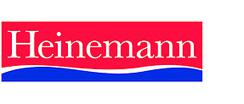- View more resources from this publisher
 University of York Science Education Group (UYSEG)
University of York Science Education Group (UYSEG)
Transporting Chemicals
A Year Ten module from the Salters’ double award science course. The story-line for this unit is the whole world market for manufactured chemicals and the need to transport them safely to where they are needed. This shows the importance of systems which convey concise, accurate information, independent of national or linguistic boundaries. Students investigate the properties of some chemicals and link them to the appropriate hazard warnings. A text exercise on the Hazchem code leads into exercises on chemical symbols, formulae and balanced equations. Students research the raw materials and methods used to manufacture some bulk chemicals. A role-play exercise is used to consider factors which influence the location of chemical industry including economic, social and environmental issues. The need for a system to classify the large number of known chemicals leads to the Periodic Table of elements.
Section 1: How are chemicals transported safely?
A photograph or slide display showing chemicals in transit introduces the need for clear information about the cargoes. Students carry out a text exercise on the design and maintenance of road tankers and discuss the regulations which control chemical transport. Practical work, and demonstrations such as the action of concentrated sulphuric acid on chicken skin link the international hazard warning signs to particular properties of chemicals. The Hazchem code is studied as a way of conveying vital information to the emergency services in the event of a chemical spillage.
Section 2: Which chemicals go where?
Chemistry texts and other sources provide details of the production and uses of some important bulk chemicals. A role-play exercise considers how chemical, economic and social issues influence choice of method for transporting chemicals.
Section 3: The Chemist’s shorthand
Excerpts from books in different languages are used to show that chemical symbols and formulas are international. Text exercises introduce the use of symbols to represent elements, formulas to represent compounds and equations to represent chemical reactions.
Section 4: Organising the elements
Attention is drawn to the relatively small number of different elements which are used to make up all known substances. An exhibition of elements and a text exercise identifying patterns in their behaviour are used to introduce the idea of classifying elements to aid recall of their properties.
A modelling exercise is used to explore different arrangements, leading to the construction of a simplified Periodic Table. Practical tests illustrate properties compounds of of gp I and gp II elements and a discussion of combining powers of elements.
Show health and safety information
Please be aware that resources have been published on the website in the form that they were originally supplied. This means that procedures reflect general practice and standards applicable at the time resources were produced and cannot be assumed to be acceptable today. Website users are fully responsible for ensuring that any activity, including practical work, which they carry out is in accordance with current regulations related to health and safety and that an appropriate risk assessment has been carried out.
Downloads
-
Transporting chemicals 6.91 MB





